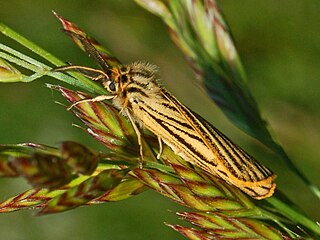
The black sea bass is a species of marine ray-finned fish, a sea bass from the subfamily Serraninae which is part of the family Serranidae, which also includes the groupers and anthias. It is found in the western Atlantic Ocean where it is an important species for commercial and recreational fisheries.

The striated heron also known as mangrove heron, little heron or green-backed heron, is a small heron, about 44 cm tall. Striated herons are mostly non-migratory and noted for some interesting behavioral traits. Their breeding habitat is small wetlands in the Old World tropics from west Africa to Japan and Australia, and in South America and the Caribbean. Vagrants have been recorded on Oceanic islands, such as Chuuk and Yap in the Federated States of Micronesia, the Marianas and Palau; the bird recorded on Yap on February 25, 1991, was from a continental Asian rather than from a Melanesian population, while the origin of the bird seen on Palau on May 3, 2005 was not clear.

The spotted flycatcher is a small passerine bird in the Old World flycatcher family. It breeds in most of Europe and in the Palearctic to Siberia, and is migratory, wintering in Africa and south western Asia. It is declining in parts of its range.

The blackpoll warbler is a New World warbler. Breeding males are mostly black and white. They have a prominent black cap, white cheeks and white wing bars. The blackpoll breeds in forests of northern North America, from Alaska throughout most of Canada, to the mountains of New York and New England. They are a common migrant through much of North America. In fall, they fly south to the Greater Antilles and the northeastern coasts of South America in a non-stop long-distance migration over open water, averaging 2500 km, one of the longest distance non-stop overwater flights ever recorded for a migratory songbird. Rare vagrants to western Europe, they are one of the more frequent transatlantic passerine wanderers.

The slaty-breasted rail is a rail species native to the Indian Subcontinent and Southeast Asia. Breeding has been recorded in July near Dehradun in the foothills of the Indian Himalayas. Despite traditionally being considered part of Gallirallus, recent genetic studies have consistently placed it in the genus Lewinia, which is now formally recognised by the IUCN and IOC.

The broad-striped Malagasy mongoose or broad-striped vontsira is a species of Galidiinae, a subfamily of mongoose-like euplerids native to Madagascar. The species contains two known subspecies: Galidictis fasciata fasciata and Galidictis fasciata striata.

Aloe striata, with the common name coral aloe, is a small, stemless South African Aloe species.

Spiris striata, the feathered footman, is a moth of the family Erebidae. The species was first described by Carl Linnaeus in his 1758 10th edition of Systema Naturae.

Bletilla striata, known as hyacinth orchid or Chinese ground orchid, is a species of flowering plant in the orchid family Orchidaceae, native to Japan, Korea, Myanmar (Burma), and China. It is most commonly found growing in clumps alongside grassy slopes with sandy soil.

Xyleutes persona is a moth of the family Cossidae. It is found in the Indian subregion, Sri Lanka, south-east Asia, Sundaland, Sulawesi, New Guinea and Queensland. The habitat consists of lowland forests.

Xyleutes strix is a moth of the family Cossidae. It is found in India, Indochina, Malesia: "Sundaland", the Philippines, Sulawesi, the Moluccas and New Guinea.
Psychonoctua albogrisea is a moth in the family Cossidae. It was described by Paul Dognin in 1916. It is found in Guyana.
Xyleutes poam is a moth in the family Cossidae. It is found in Mexico.
Xyleutes xanthotherma is a moth in the family Cossidae described by George Hampson in 1919. It is found in Peru.
Givira daphne is a moth in the family Cossidae first described by Herbert Druce in 1901. It is found in Colombia.
Xyleutes desdemona is a moth in the family Cossidae first described by Harrison Gray Dyar Jr. and William Schaus in 1937. It is found in the Brazilian state of Espírito Santo.
Xyleutes terrafirma is a moth in the family Cossidae. It was described by William Schaus in 1911 and is found in Costa Rica.
Xyleutes unilinea is a moth in the family Cossidae. It was described by Harrison Gray Dyar Jr. in 1925 and is found in Mexico.
Xyleutes xuna is a moth in the family Cossidae. It was described by Harrison Gray Dyar Jr. in 1937 and is found in Mexico.
Persoonia striata is a species of flowering plant in the family Proteaceae and is endemic to the south-west of Western Australia. It is an erect, often spreading shrub with hairy young branchlets, linear to spatula-shaped leaves, and bright yellow flowers borne in groups of up to five on a rachis up to 2 mm (0.079 in) long that continues to grow after flowering.










